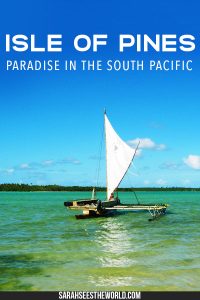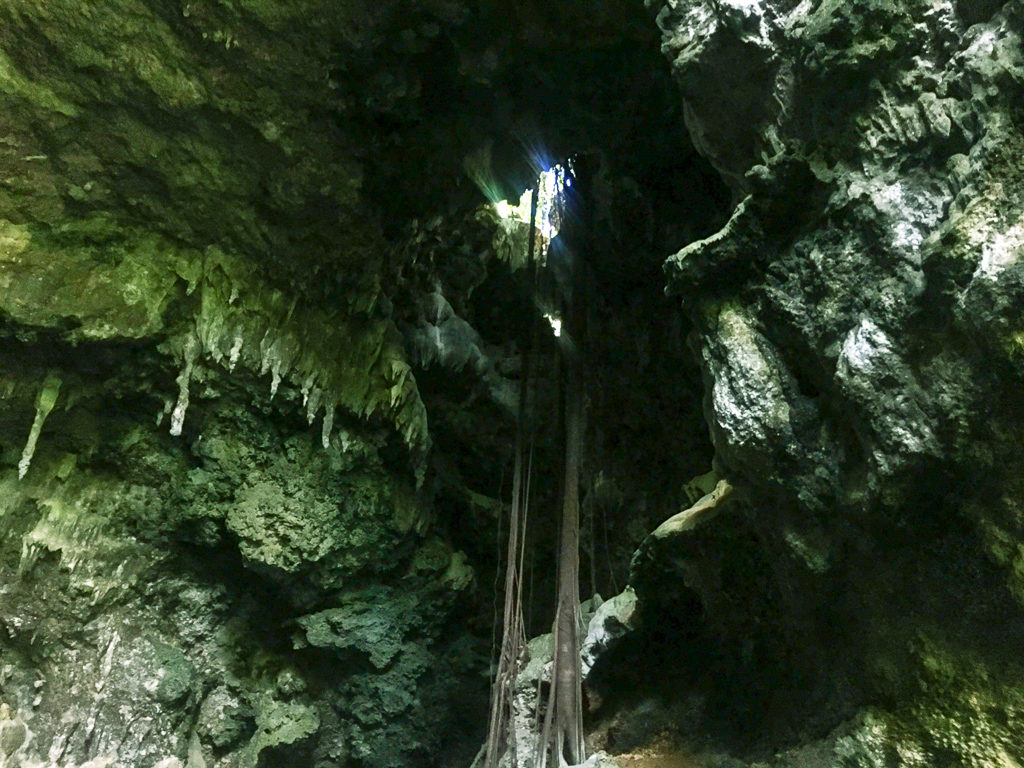Isle of Pines New Caledonia (Ile des Pins) is a 14km by 18km island in named by discoverer Captain James Cook in 1774 for the pine trees which cover it. It is the most visited island in the archipelago and was my favourite stop on the Royal Caribbean cruise I took in November.
As well as being frequented by cruise ships the island is accessible within a few hours from Noumea by ferry and the local airport receives several flights each day.
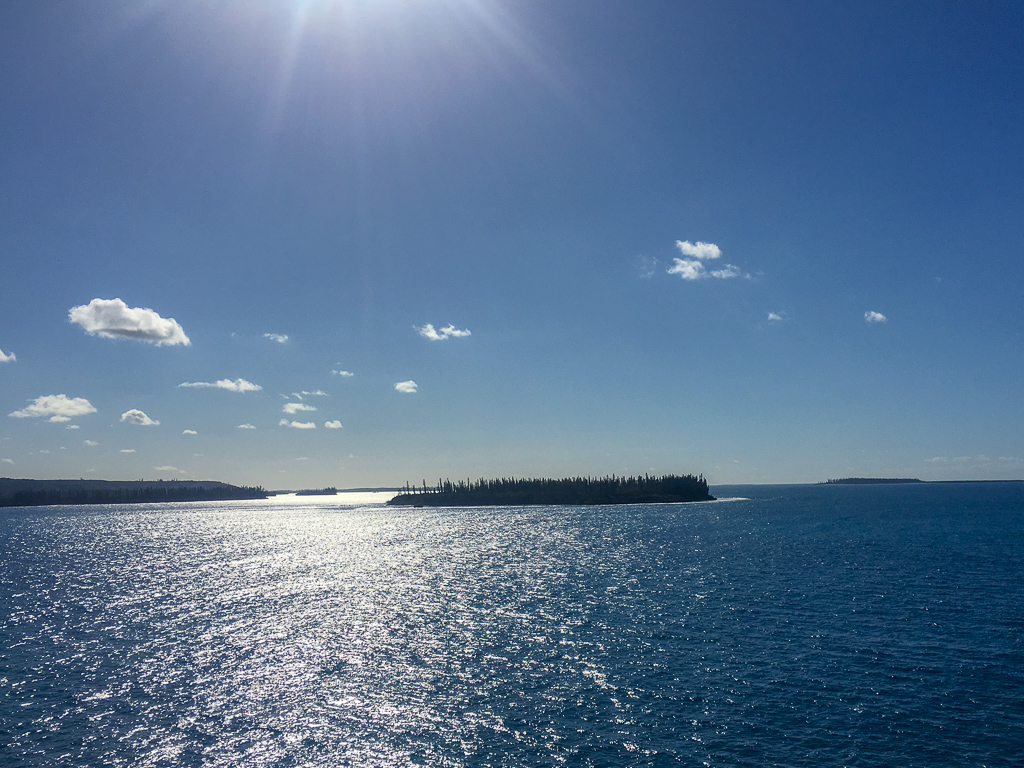
For a small island there is an abundance of hotels and resorts on Isle of Pines with tourism being the key industry for employment for the 2000 or so people who live here, mostly in the main town of Vao in the south of the island which has all the facilities you’d expect including schools, stores, a hospital and a church.
Coming ashore by tender from our cruise ship the remoteness and unspoiled appearance of the island quickly seemed at odds with the thousands of tourists already on the island.
Visiting Isle of Pines by cruise ship
If you’re visiting Isle of Pines on a cruise ship be aware you can’t take any food or drinks (with the exception of water) on or off the island.
There are no shops or restaurants other than those in the resorts (Escargots de l’Ile des Pins being the delicacy to seek out there), but there were a number of stalls set up around the wharf selling coconuts, souvenirs, imported snacks and hair braiding services. They accept Australian Dollars as well as CFP Francs.
The public toilets near the wharf are well maintained actual flushing ones in a modern structure.
Kuto and Kanumera Bays
Kuto Bay is a long white sand beach where tenders arrive from cruise ships. There were a number of yachts in the bay and a three star resort and restaurant with million dollar views is located on the beach front.
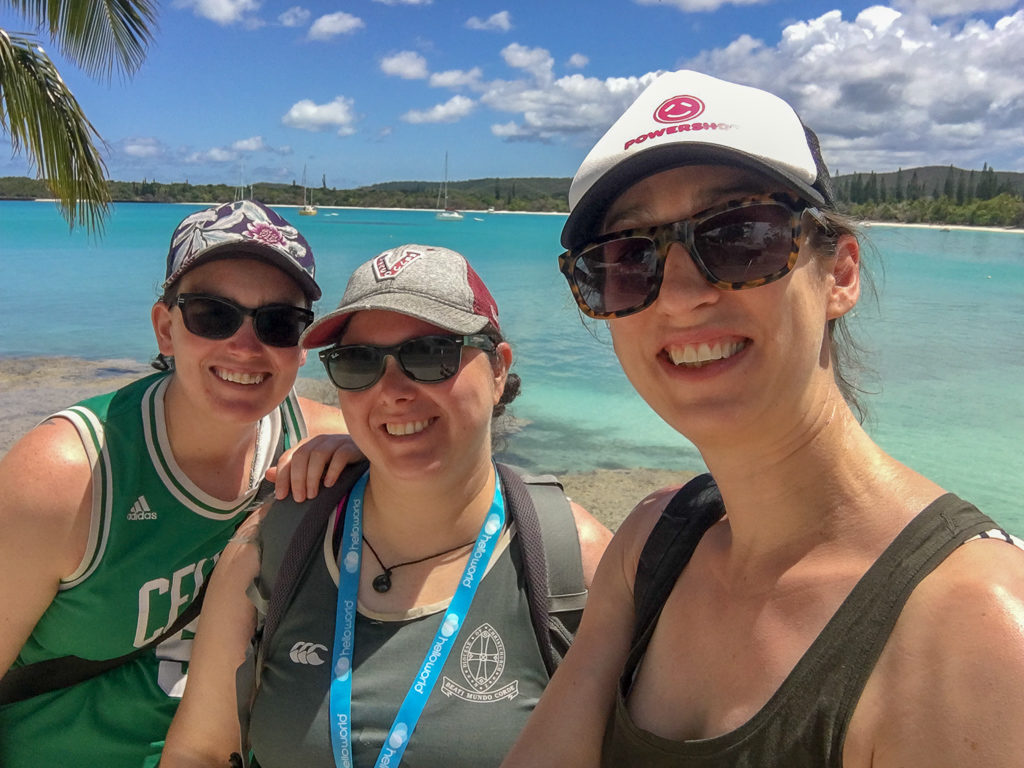

About a minute’s walk away on the other side of a small strip of land from Kuto Bay is Kanumera Bay which features a sacred rock, coral, clear and calm water and amazing snorkelling. Be respectful of the coral and take water shoes to navigate the sharp rocks on your way into the water.
The beaches have nothing in the way of shelter from the sun or rain so come prepared with sunblock, hats and clothing to cover up with if you’re planning on spending the day at the beach. The first 300m or so of the beach was covered in people by the time we arrived but there was plenty of space past the crowds.
History, tribes and traditions
Up the road from the main tourist beaches are the ruins of Prison House and other buildings from the islands time as a penetary facility in the 19th century. There is also a cemetery for the prisoners who died on the island.
Yams are the main food grown in New Caledonia. They’re planted in September or October and harvested in March. March 19th is effectively their New Year according to the Yam Calendar when the annual yam festival takes place.
There are eight tribes on Isle of Pines, each of which has their own chief and there is an overall high chief. Each tribe is allowed to catch a turtle for meat at the time of the annual yam festival.
Grotto of Queen Hortense
Oumagne Grotto or the (Grotto of Queen Hortense) is in the North of the island. In 1855 during a time of conflict between the local tribes, the young Hortense was named by her father the King of the Island (who had no sons) as successor to the throne. Her Uncle in particular did not think much of this decision and Hortonse was hidden in the then-unknown limestone caves for six months, fearing for her safety.
There is a small entry fee to visit the caves which are about a five minute walk through jungle from the road. We didn’t venture far into the caves (a torch would be required) but the stalactites, darkness, earthy dank smell and lush ferns seemed airy and not somewhere I’d personally want to hide out for months at a time.
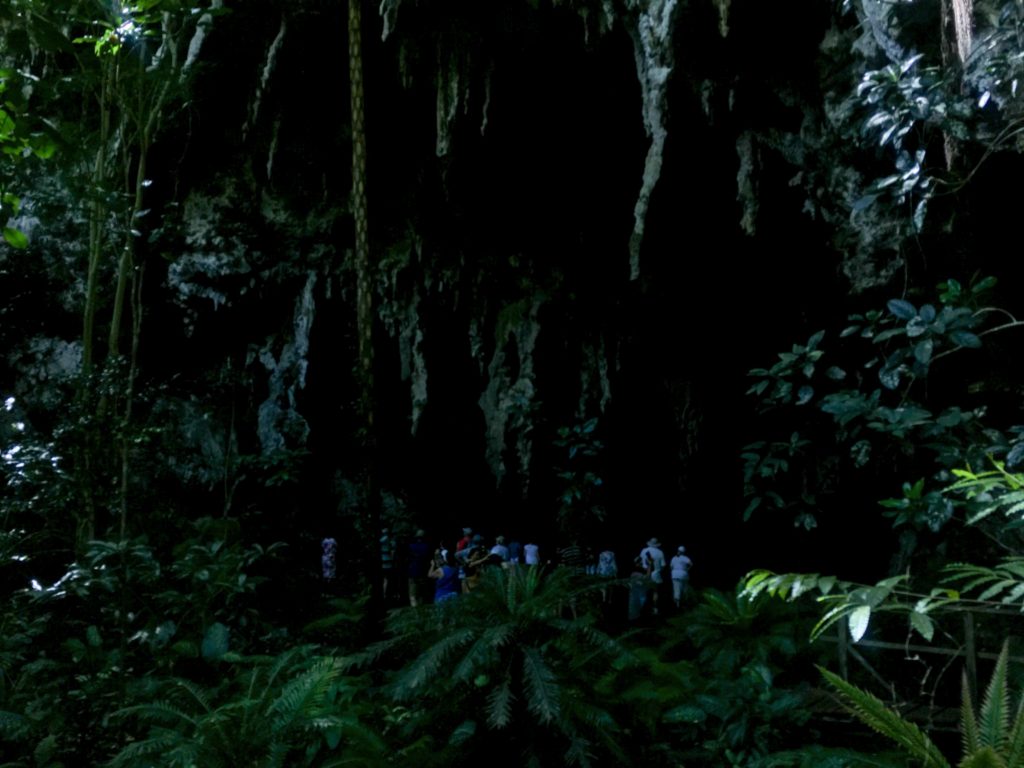
Saint Joseph Bay
In Saint Joseph Bay we saw traditional sailing outriggers made from columnar pine which the locals seem particularly proud of. These take around six months to make which includes soaking the pine in salt water.


Saint Maurice Bay
Saint Maurice Bay was almost deserted when we visited late in the day and it felt very far away from the crowds covering the beaches of Kuto and Kanumera Bays. Traditional wood carvings placed around a religious memorial celebrate the arrival of the first Marist brothers to the island in 1848.
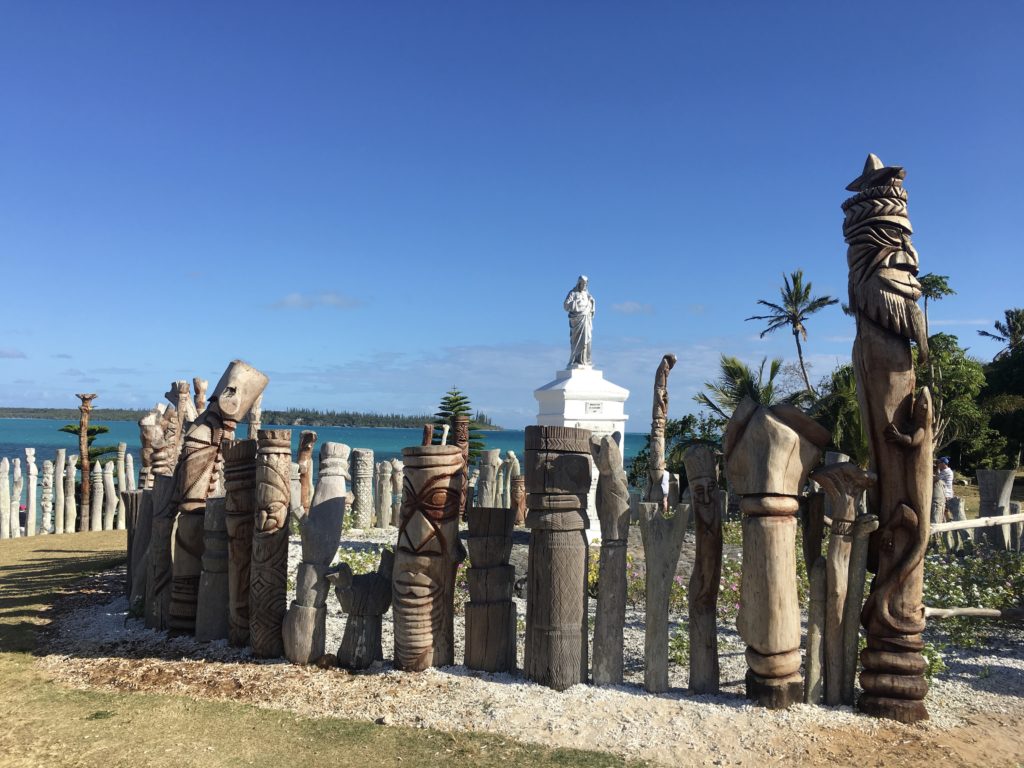
Natural aquarium
If you’ve got more than a day on Isle of Pines the Natural Pool in Oro Bay at the far end of the island is said to have the best snorkelling.
This natural swimming pool of sheltered clear water costs XPF 1,000 per person for entry and is a ten minute walk through a trail from a free car park near the hotel Le Meridien.
With white sand and the majestic Columnar pines the island is famous for, snorkelling gear and reef-safe sunscreen is essential. The water is shallow but full of colourful fish and coral. Being extremely popular, it’s recommended to go in the morning or after 2.30 pm to avoid the masses.
Unfortunately none of the shore excursions offered by our cruise ship went there but given half an opportunity I’d be back on Isle of Pines swimming in the natural aquarium there tomorrow.
